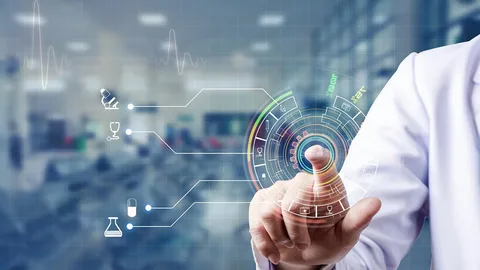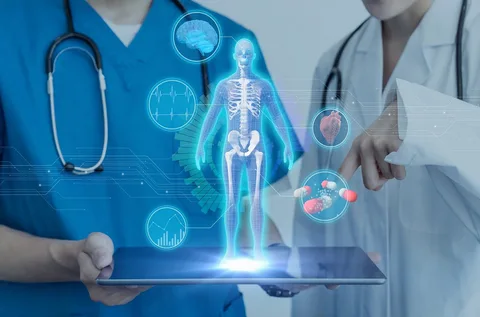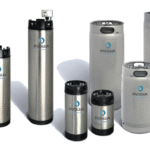Introduction.
Healthcare is changing fast. People don’t always need to visit hospitals now. With new technology, they can get care at home. This makes life easier and helps people stay healthy without leaving their house.
Doctors, nurses, and caregivers are using smart tools. These tools help them check on patients without being there in person. This change is called “future healthcare technology.” It makes at-home care better and safer for everyone.
What Is Future Healthcare Technology?

Future healthcare technology means using new tools to improve health. These tools include apps, devices, and machines. They help doctors and patients connect from far away. They also make care faster and more accurate.
Some examples are smartwatches that check heart rates, video calls with doctors, and machines that give medicine at home. These technologies help people get the right care without going to a clinic.
Why At-Home Care Matters Today
At-home care is when patients get help while staying at home. This is helpful for older people, those with disabilities, and anyone who wants comfort. It saves time and money and makes people feel safe.
With better tools, at-home care is now more effective. Nurses can monitor patients using smart devices. Doctors can advise on phones or computers. These tools make sure the patient is never alone in their care journey.
Benefits of Healthcare Technologies at Home
1. Easy Access to Care
Many people live far from hospitals. They might not have a ride or feel too sick to travel. Healthcare technology lets them talk to doctors from home. A video call can replace a clinic visit. This saves time and energy.
2. Better Monitoring of Health
Devices like digital thermometers, blood pressure monitors, and heart rate trackers are used at home. They collect data and share it with doctors. This helps in finding problems early and giving the right treatment.
3. Personalized Treatment Plans
With data from these tools, doctors can give each person a plan that fits their needs. For example, a person with diabetes might get daily blood sugar reports sent to their phone. Their doctor can check this and adjust medicine as needed.
Telehealth: The Power of Virtual Care
Telehealth is one of the biggest parts of future healthcare technology. It lets doctors and patients meet through video calls, chats, or apps. No need to travel or wait in long lines.
This helps people in rural areas a lot. It also supports people who can’t move easily. Children, older adults, and those with chronic illness benefit from quick doctor access at home.
Wearable Health Devices: Tracking Health in Real Time
Wearable devices are tools you can wear like watches or bands. They check your body’s signs and send the info to apps or doctors.
Some examples are:
- Smartwatches that count steps, sleep, and heartbeats.
- Patches that monitor sugar levels for diabetics.
- Bands that track breathing and oxygen levels.
These tools help people know how they feel every day. They also give alerts if something is wrong, so help can come quickly.
Remote Patient Monitoring: Keeping an Eye from Afar
Remote Patient Monitoring (RPM) means doctors watch patients from far away. They use tools that send health data to clinics. This is very useful for people with long-term illnesses like asthma or heart disease.
A small device might check the patient’s heart or lungs. If something is wrong, a nurse will call or come to help. This gives peace of mind to both patients and families.
AI in Healthcare: Helping Doctors and Patients
Artificial Intelligence (AI) is smart computer technology. It helps doctors make decisions faster. AI can read test results, spot signs of sickness, and give suggestions.
For at-home care, AI can:
- Remind people to take medicine.
- Suggest exercises or diets.
- Watch for danger signs and alert caregivers.
It’s like having a mini nurse or assistant right in your home.
Smart Home Integration: Making Homes Health-Friendly
Smart homes use devices connected to the internet. These devices can help with healthcare too. For example:
- A voice assistant can remind someone to take their pills.
- Smart lights and alarms can help those with vision or memory problems.
- Sensors can tell if someone falls and call for help.
All these tools make at-home care easier and safer for everyone.
The Role of Mobile Health Apps
Mobile health apps are apps you can install on your phone or tablet. They help track your health and talk to doctors. Some let you book appointments, order medicine, or check test results.
They also offer tips on eating healthy, staying active, and sleeping well. Some apps even have mood tracking for mental health.
Mental Health Support from Home
Mental health is just as important as physical health. Now, people can get help through online therapy sessions, support groups, and mental wellness apps.
These tools help reduce stress, manage anxiety, and deal with sadness. People can get care without anyone knowing if they feel shy or worried.
Challenges in At-Home Healthcare Technology
Even with many benefits, there are still problems to solve.
1. Internet Issues
Not everyone has a fast or stable internet connection. This can make video calls with doctors hard.
2. Cost of Devices
Some smart devices are expensive. Not all families can buy them.
3. Learning to Use Technology
Older people or those who aren’t tech-savvy might find it hard to use these tools. They need help to learn.
The Future of At-Home Care
The future is bright. More tools are being made to help people care for their health at home. These will be smarter, smaller, and cheaper. Robots may even help with tasks like giving medicine or checking vital signs.
As these changes grow, people will live better, longer, and safer lives right in their own homes.
Real Stories: How Technology Helped Lives
Sarah’s Story
Sarah is 75 and lives alone. She wears a smartwatch that tracks her heart. One night, the watch showed something wrong. It sent a message to her doctor. She got help quickly and is now doing well.
Ahmed’s Story
Ahmed has diabetes. He uses a patch to check sugar levels and an app that shares this with his doctor. He doesn’t need to visit the clinic every week now. His health is better, and he saves money too.
Tips for Starting At-Home Care with Technology
- Start Small: Begin with a simple device like a digital thermometer or blood pressure monitor.
- Get Help: Ask your doctor or a tech expert to teach you how to use the tools.
- Stay Connected: Make sure your internet works well.
- Keep Devices Charged: Make charging part of your daily routine.
- Track Your Health: Use apps to write how you feel each day.
Conclusion: A Smarter Way to Stay Healthy
Future healthcare technology is elevating at-home care in amazing ways. From wearable tools to smart homes and mobile apps, people now have more control over their health.
Doctors can help from far away, and patients feel safe and supported. At-home care is not just easier—it’s smarter and more caring too.
Faqs
1. What is future healthcare technology?
Future healthcare technology includes smart tools like apps, devices, and machines that help people take care of their health better, often from home.
2. How is at-home care different from hospital care?
At-home care lets people get medical help without visiting the hospital. It’s more comfortable and easier for many, especially the elderly.
3. What are some examples of healthcare technologies used at home?
Smartwatches, health apps, video doctor visits, remote monitors, and medication reminder systems are common examples.
4. Can people with chronic diseases benefit from at-home care?
Yes. People with diabetes, asthma, or heart problems can use special devices to track health and stay in touch with doctors.
5. How do doctors monitor patients from home?
Doctors use remote patient monitoring tools that send health data, like blood pressure or sugar levels, from the patient’s home.
6. What if someone doesn’t know how to use technology?
Doctors or caregivers can teach them, and many devices are made to be simple and easy to use, even for beginners.
7. Is at-home care safe?
Yes, when using the right tools and having regular check-ins with doctors, at-home care is both safe and helpful.
8. What are wearable health devices?
They are smart gadgets like wristbands or watches that track heart rate, sleep, and steps to help people stay healthy.
9. Can mental health be treated at home too?
Yes. Apps, video therapy, and online support groups make it easy for people to get mental health help from home.
- Will at-home healthcare become more common in the future?
Yes. With better and cheaper technology, more people will be able to take care of their health from home.



